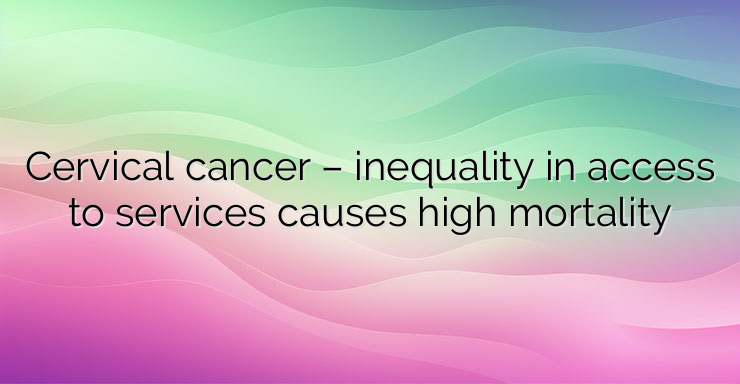Cervical cancer is the fourth most common cancer in women worldwide, with an estimated 604,000 new cases and 342,000 deaths in 2020. The highest rates of cervical cancer incidence and mortality are in countries with low and average incomes. This reflects major inequalities driven by lack of access to national human papillomavirus vaccination, cervical screening and treatment services and social and economic determinants. Cervical cancer is caused by persistent infection with the human papillomavirus (HPV). Women living with HIV are 6 times more likely to develop cervical cancer than women without HIV. Prophylactic vaccination against human papillomavirus and screening and treatment of precancerous lesions are effective ways to prevent cervical cancer. Cervical cancer can be cured if it is diagnosed at an early stage and treated promptly. Globally, cervical cancer is the fourth most common cancer in women, with 604,000 new cases in 2020. About 90% of the 342,000 deaths caused by cervical cancer occurred in low- and middle-income countries incomes. Regional differences in cervical cancer burden are related to inequalities in access to vaccination, screening and treatment services, risk factors including HIV prevalence, and social and economic determinants. Women living with HIV are 6 times more likely to develop cervical cancer than the general population, and approximately 5% of all cervical cancers are due to HIV. Human papillomavirus is a common sexually transmitted infection that can affect the skin, genital area, and throat. Almost all sexually active people will be infected at some point in their lives, usually without symptoms. In most cases, the immune system clears the virus from the body. Persistent infection with high-risk human papillomavirus can lead to the development of abnormal cells that continue to turn into cancer. Persistent HPV infection of the cervix, if left untreated, causes 95% of cervical cancer cases. It usually takes 15-20 years for abnormal cells to become malignant, but in women with weakened immune systems, such as untreated HIV, this process can be faster and take 5-10 years. Risk factors for cancer progression include the degree of oncogenicity of the human papillomavirus type, immune status, presence of other sexually transmitted infections, number of births, young age at first pregnancy, use of hormonal contraceptives, and smoking. Increasing public awareness, access to information and services are key to lifelong prevention and control. Vaccination at the age of 9-14 is a very effective way to prevent HPV infection, cervical cancer and other cancers,related to the virus. References: 1. https://www.who.int/news-room/fact-sheets/detail/cervical-cancer 2. American College of Obstetricians and Gynecologists. Cervical Cancer Screening (https://www.acog.org/womens-health/faqs/cervical-cancer-screening?utm_source=redirect&utm_medium=web&utm_campaign=otn) 3. American Cancer Society. Cervical Cancer (https://www.cancer.org/cancer/cervical-cancer.html). 4. Centers for Disease Control and Prevention. Cervical Cancer (https://www.cdc.gov/cancer/cervical/index.htm). 5. Centers for Disease Control and Prevention. Human Papillomavirus (HPV) Vaccine (https://www.cdc.gov/vaccinesafety/vaccines/hpv-vaccine.html?CDC_AA_refVal=https%3A%2F%2Fwww.cdc.gov%2Fvaccinesafety%2Fvaccines%2Fhpv%2FIndex.html ).


Leave a Reply